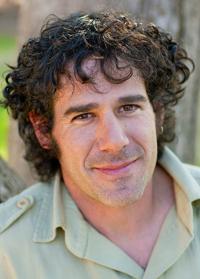A University of Arizona associate research scientist who worked at Biosphere 2 was killed by a suspected impaired driver Thursday night while bicycling on Arizona 77 near Oracle Junction.
The man driving the pickup that struck Raphael D. Sagarin was allegedly impaired at the time of the collision, said Quentin Mehr, an Arizona Department of Public Safety spokesman.
Gary L. Colvin, 44, of Tucson, was booked into the Pinal County jail and is facing manslaughter charges, Mehr said.
Sagarin, 43, an adjunct assistant professor in the UA School of Natural Resources and the Environment, was riding a bicycle northbound near milepost 99 and was struck from the rear shortly after 6:30 p.m., said Mehr.
The investigation revealed the pickup swerved partially off the road and struck Sagarin, who was wearing a helmet, Mehr said.
Sagarin had planned to stay overnight at Biosphere 2 near Oracle, where he led a project to transform the lagoon into a living model of the Gulf of California.
He was taking an evening exercise ride when he was struck, said Greg Barron-Gafford, a colleague at Biosphere 2 and the UA’s Institute of the Environment.
Sagarin, who went by “Rafe,” was a marine ecologist who wrote and lectured about applying the adaptive lessons of the natural world to dealing with security threats.
He began blending the two topics in 2002 when he served as science advisor to U.S. Rep. Hilda Solis, D-Calif.
It was the time of the anthrax scare at the Capitol and Sagarin wasn’t impressed with the security measures put in place.
He would later write two books on the subject — one academic, and the other for the general public, titled: “Learning From the Octopus: How Secrets from Nature Can Help Us Fight Terrorist Attacks, Natural Disasters, and Disease.”
His work at the Biosphere was an extension of his deep affection for the Gulf of California, or Sea of Cortez, colleagues said.
“He was thrilled when he got the chance to lead the ocean ecosystem initiative at Biosphere 2,” Diana Liverman, co-director of the institute, said in an email. “His dream was to convert it to something more like the Sea of Cortez ... so that it would be an example of the ‘desert sea’ of the Sonoran desert.”
While on the faculty at Duke University in 2004, Sagarin joined a group retracing a sailing expedition taken by Marine biologist Ed Ricketts and author John Steinbeck in 1940.
In a 2009 interview with the Star, he said there was no laboratory substitute for what can be learned on such a trip. “The key is the idea of serendipity — just go out and study nature. You may discover something completely unexpected,” he said.
He told the Star in 2014 he wanted to give Biosphere 2 visitors a sense of the connection between the sea and the Sonoran Desert at its shore.
“He lived life to the fullest,” said Barron-Gafford. He did what he loved and he loved what he did.”
Baron-Gafford said Sagarin “brought a spark of life” to the Biosphere ocean project.
He was also a talented artist, Barron-Gafford said. “He was kind of a Renaissance guy.”
The UA released a statement Friday evening about Sagarin.
“Dr. Sagarin was committed to education and research, and understood that the Biosphere was a unique platform for science and education,” said Joaquin Ruiz, dean of the College of Science. “He represented all of us in our commitment to quality and making things better. ‘Rafe’ will be deeply missed. His energy and enthusiasm were contagious, and it was a blessing to have known such wonderful colleague.”







